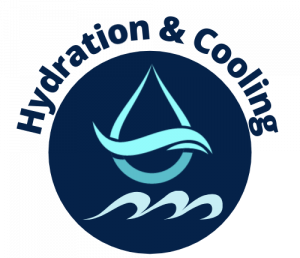Stay safe with proper footwear and techniques for tarp operations. Learn essential traction safety tips to prevent dangerous slips and falls when working with field tarps.
_______________________________
Traction Safety: Preventing Slips and Falls During Tarp Operations
The Hidden Dangers of Tarp Deployment
Every year, athletic staff and grounds crews suffer injuries from slips and falls during tarp operations. Whether you’re pulling a heavy field cover during a sudden downpour or carefully deploying a tarp in dewy morning conditions, traction safety can make the difference between a smooth operation and a trip to the emergency room. The combination of hurried movements, wet surfaces, and heavy materials creates a perfect storm for accidents. But with proper preparation and equipment, these risks can be significantly reduced. At Hydration and Cooling, we’re committed to keeping sports teams and grounds crews safe with practical solutions that address real-world challenges.
Footwear Requirements for Safe Tarp Handling
Your choice of footwear is your first line of defense against slips and falls during tarp operations. Standard athletic shoes or casual work boots simply don’t provide the grip needed on wet surfaces.
Essential Footwear Features
Look for shoes or boots with deep, multi-directional tread patterns specifically designed for wet conditions. The outsole material matters significantly – rubber compounds formulated for wet-surface traction outperform standard materials by up to 60% in grip tests. Cleated options provide excellent traction on natural grass but can become dangerous on hard surfaces like concrete walkways or warning tracks.
When to Replace Your Footwear
Even the best traction footwear becomes dangerous once the tread wears down. Inspect your shoes regularly, especially before rainy seasons. If tread depth is less than 2mm in any major contact area, it’s time for replacement. Remember that rubber compounds harden over time, reducing grip even if the tread pattern looks intact. Most quality traction footwear should be replaced annually with regular use.
Surface Awareness and Preparation
Different surfaces require different approaches to maintain traction during tarp operations. Natural grass, artificial turf, clay, and concrete each present unique challenges.
Natural Grass Considerations
Recently mowed grass becomes significantly more slippery when wet. Schedule mowing at least 24 hours before potential tarp deployment whenever possible. The grass clipping residue creates an invisible slick layer that drastically reduces traction. For emergency situations, consider keeping designated “tarp deployment” footwear with aggressive tread patterns available near storage areas.
Warning Track and Hard Surface Precautions
The transition between playing surface and warning track is a common spot for slips during tarp pulls. This area combines different textures, often with subtle elevation changes. Mark these transition zones with small visual indicators visible to staff during deployment. For clay or dirt warning tracks, remember that the first moments of rainfall create the most dangerous conditions as water mixes with surface dust to form a slippery film.
Team Coordination Techniques
The way your team works together dramatically affects traction safety. Uncoordinated pulls create jerking motions that throw people off balance. Implement a clear cadence system with verbal commands to ensure synchronized movement. Designate a single voice to call commands during deployment to avoid confusion. Practice these coordination techniques during dry conditions so they become second nature during actual weather events.
Ready to improve your team’s safety during tarp operations?
At Hydration and Cooling, we offer specialized footwear and safety equipment designed for sports field operations. Call us today at 828-820-8600 to discuss your team’s specific needs and discover how our solutions can help prevent costly injuries and ensure smoother tarp deployments. When life gets hot, we do cool – and we keep you safe in the process!
